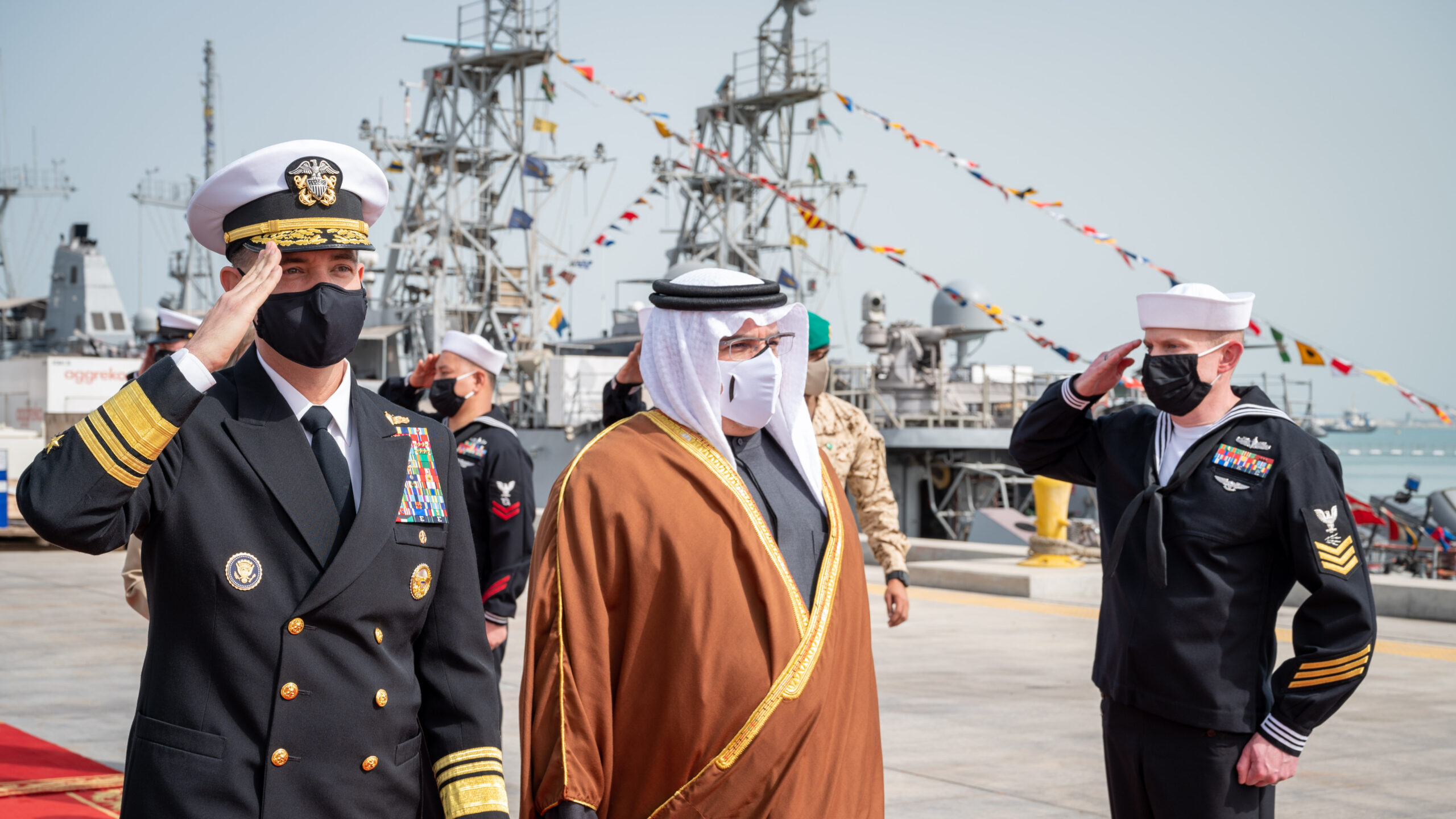
His Royal Highness Prince Salman bin Hamad Al-Khalifa, crown prince and deputy supreme commander and prime minister of Bahrain and Vice Adm. Brad Cooper, commander of U.S. Naval Forces Central Command, U.S. 5th Fleet and Combined Maritime Forces, arrive at the pier at Naval Support Activity Bahrain. (U.S. Navy photo by Mass Communication Specialist 1st Class Mark Thomas Mahmod)
WASHINGTON: The US Navy is establishing a new task force to increase its presence alongside allied nations in the Red Sea region, a senior US 5th Fleet officer announced today. The move comes in the wake of several attacks in the area that have been attributed to Yemen’s Houthi rebels — though the service was reticent to connect the two events.
Vice Adm. Brad Cooper, who commands a combined, international maritime coalition based in the region, said Combined Task Force 153 would be commissioned on Sunday in Bahrain. A US Navy officer will initially lead the group operating from the amphibious command ship Mount Whitney (LCC-20), but an officer from a regional nation will take command of CTF-153 later this year.
By standing up CTF-153, “we’ll strengthen the combined maritime force which is the world’s largest multi-national naval partnership and ultimately we’ll enhance stability and security in the Red Sea and in the region,” Cooper said.
When asked by multiple reporters whether the new task force was related to Iran-backed Houthi attacks, the admiral demurred and instead cited the large amount of trade that flows through the waterway connecting the Mediterranean Sea to the Arabian Gulf via the Suez Canal. He also said the group would aim to stop various smuggling efforts of coal, drugs and weapons.
The Houthis have claimed responsibility for a series of attacks in recent months aimed at Saudi Arabia to disrupt its ability to export oil into the global economy. One such attack happened just weeks ago at the port city of Jeddah and filled the clouds with black smoke during a Formula One car race happening nearby, the New York Times reported. (Attacks attributed to Houthi rebels on the UAE have prompted the Gulf nation to consider buying Israeli defense systems, as Breaking Defense has reported.)
Travis Sharp, a fellow at the Center for Strategic and Budgetary Assessments, told Breaking Defense the Houthis “pose an active and persistent threat to freedom of navigation in the Red Sea.” He added that the circumstances in Yemen have made it increasingly difficult for the US to maintain situational awareness about the group’s capabilities. Sharp suggested Cooper’s unwillingness to connect CTF-153 with the Houthi attacks may be an issue of politics.
“If the United States were to propose an explicitly anti-Houthi task force, they might not get many countries in the region who would be willing to join that because the countries have varying perspectives on what’s happening in Yemen,” he said.
In other words, a focus on cracking down on illegal smuggling carries much less baggage than targeting a particular group that may have political sympathy from some countries in the Middle East.
“I don’t know to what extent this task force is going to be focused on the Houthis, but it seems to me that it’s a smart idea to first build the coalition,” said Sharp. “And then over time, lead it in the direction that you want it to go in terms of which issues to focus on.”
The Combined Maritime Forces Command has several other task forces, including one focused on security outside the Arabian Gulf, a second dealing with counter-piracy efforts and a third tasked with security inside the Arabian Gulf.
Iran says it shot down Israel’s attack. Here’s what air defense systems it might have used.
Tehran has been increasingly public about its air defense capabilities, including showing off models of systems at a recent international defense expo.


























